And a bit of a mystery.
Both photos were taken in the same general area of Box Elder County in June of 2017 but they were taken five days apart.
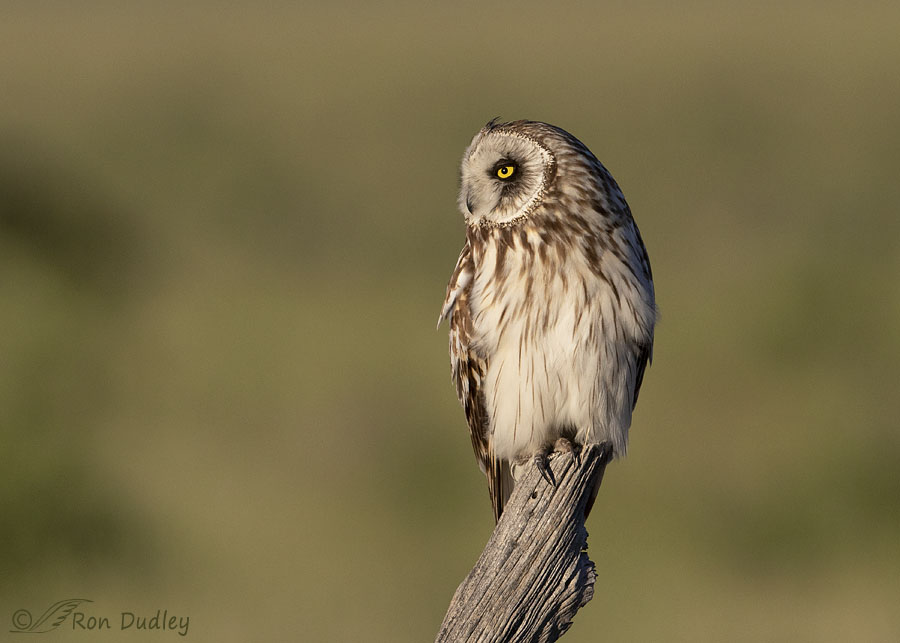
1/4000, f/6.3, ISO 640, Canon 7D Mark II, Canon EF 500mm f/4L IS II USM, not baited, set up or called in
This bird was unusually approachable, especially for a Short-eared Owl. “He’ was perched on an ancient fence post directly across the remote road from me so I was close enough that I felt compelled to remove my teleconverter in case I got lucky enough for a takeoff shot (I didn’t).
I believe he was as ‘sticky’ as he was because he was hunting the grasses directly below him so intently he didn’t want to be distracted. At one point…
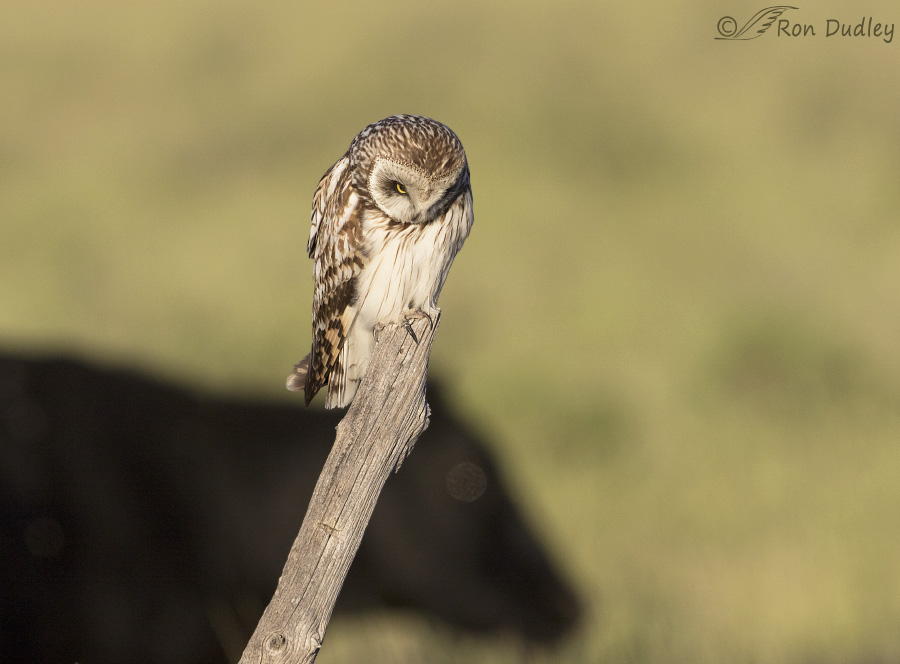
a cow passing within a few feet behind him didn’t even warrant a glance. He just continued to hunt the grasses below his perch (I’ve posted this photo before).
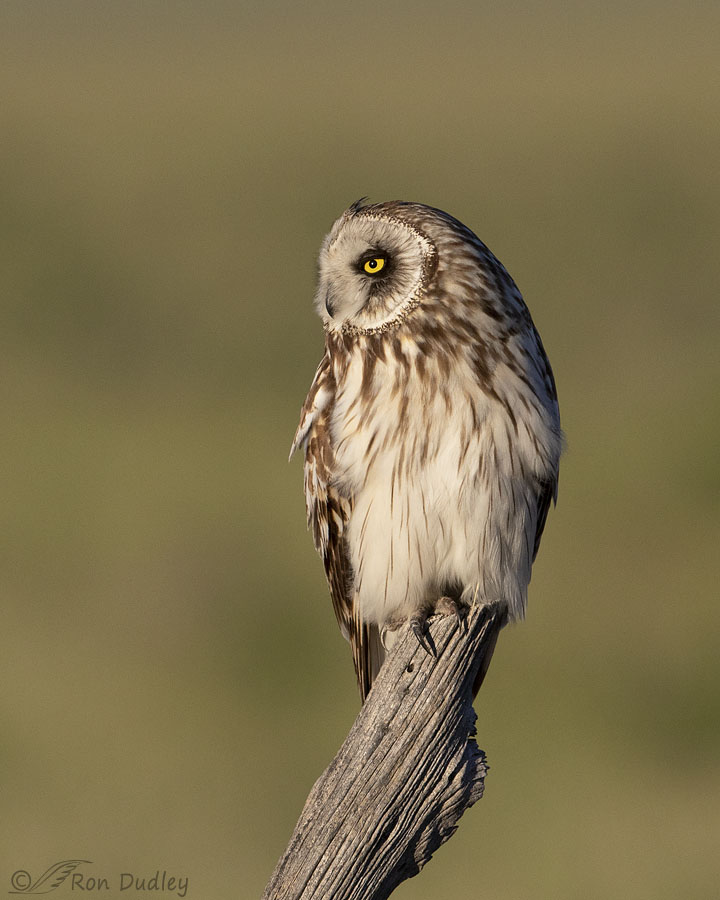
A vertical crop of the first photo allows a closer look at the owl and a slightly better look at one of his ear tufts that in this species are completely hidden more often than not. I think I actually prefer the vertical composition.
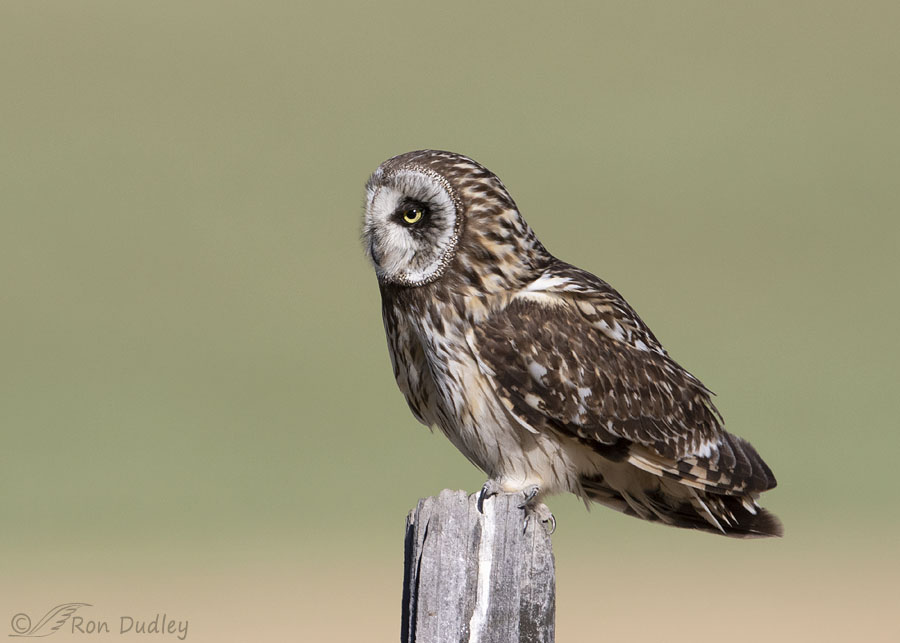
1/3200, f/7.1, ISO 400, Canon 7D Mark II, Canon EF 500mm f/4L IS II USM + EF 1.4 III Extender, not baited, set up or called in
A couple of things caught my eye about this second SEOW. First there’s the pastel colors in the background. Love’m or hate’m I rarely get pastel colors in my backgrounds so they definitely got my attention.
I’m also slightly confused about the eye of this bird. Initially I thought I could see both the upper eyelid and the nictitating membrane which appeared to be drawn down over the upper half of his eye. But then I remembered that in my other photos of this species showing their nictitans the membrane originates in the inside corner of the eye rather than toward the top of the eye.
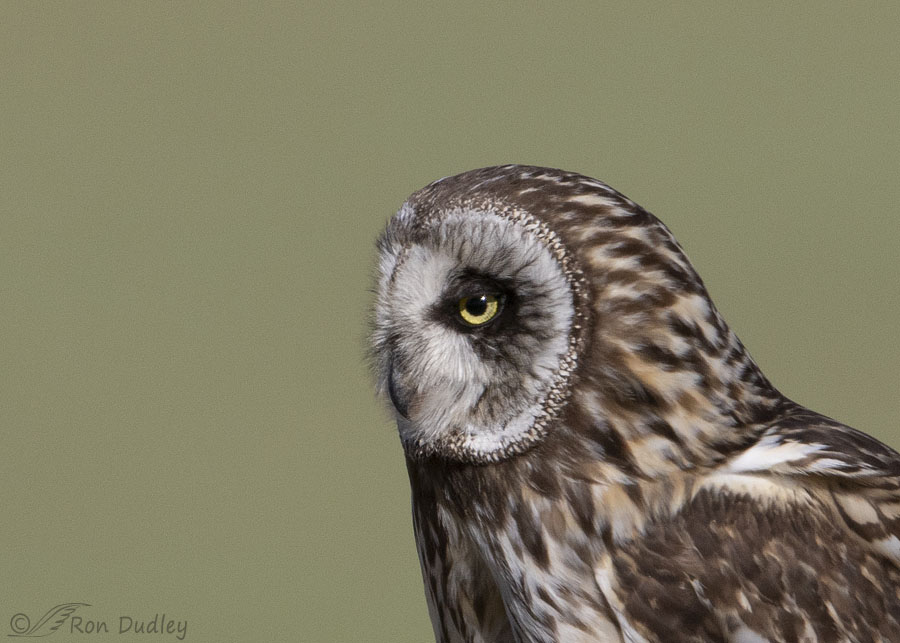
So I investigated with a much tighter crop of the same photo which I believe shows that what I thought was the nictitans is actually a shadow cast by the partially closed upper eyelid.
However if that’s the case, and I believe it is, the shadow of the upper eyelid should have prevented that distinct catch light in the eye which is (presumably) a reflection of the sun.
So like I said, I’m slightly confused but it certainly isn’t the first time.
Ron


Beautiful photos as always! And your catch light mystery is interesting. I have a photo of my red-shouldered hawk with exactly the same phenomenon. I don’t see a way to attach it hear but it’s in the banner at the top of my website http://www.SecretGardenBirdsAndBees.com. I wish I had an explanation!
Yup, looks like it could be a similar phenomenon.
Stunning pictures, you really nailed ths.
Wonderful photos, Ron. Short-eared owls are special. I do like the vertical crop.
Thanks, Nancy. They sure are.
Mysterious or not, these are all fabulous shots (and yes, I like the vertical crop better too). I’m most impressed with both the SEOW’s intense focus on the task at hand as well as your capturing a catchlight in the cow’s eye in the 2nd shot.
My students dissected the occasional cow and sheep eye toward the beginning of my career, but unfortunately, the changes to the CA science standards back in 2000 more or less nixed that particular activity until my last year of teaching HS when I (finally!) had one anat/phys class.
Marty, my students always had a lot of fun dissecting those eyes while learning a lot about both their anatomy and their physiology. In later years we pretty much stopped dissecting them too and I think that’s too bad.
My favorite image of one of my favorite owls is all five…
Good way to put it, Patty…
THANK YOU.
I had a difficult night and these photos have started my day (later than usual) beautifully. As I so often say ‘too many owls would be barely enough’. And the cow shadow and the mystery are bonuses.
Thanks, EC. That’s actually the cow rather than her shadow. I like what my lens did to the catch light in her eye…
WOW. And yes, having gone back and looking again that is a spectacular (and very different) catch light.
Beautiful images. I will leave the eye pondering to others though. I sure miss the abundance of SEOW we had that year!
I do too, April. It was amazing!
Great photos, esp the 2nd one, the vertical crop and the eye and ear detail. Your questions, as usual, are the added dimension which take me beyond the usual “pretty picture” indifference and which keep me coming back here; then, too, didn’t someone once say something about confusion coming before curiosity which in turn comes before understanding?
Someone probably did, Pat. And I think they were right!
Confusion and curiosity travel in lockstep for me. Always have and I suspect always will.
A fortuitous pairing, seems to me.
Much better said than my version, EC.
Nice photos. With regard to the distances within the eye. The sheep and cow eyes you examined in the past will not make the best examples. The eyes of an owl are not round, like mammalian eyes. The rear portion of the eye is hemispherical but the front half of the eye is more tubular, pushing the cornea far forward. Perhaps this is the answer to your mystery?
Thanks, Dan. I was aware of the unusual shape of owl eyes and yes, I think it’s likely to be at least part of the explanation.
Just a quick thank you for your and everyone’s stories yesterday
Thanks, Diana. Quite a range of experiences isn’t it.
I’m impressed that you got a photo of the simultaneous eye catch and shadow; even more impressed that you noticed it.
I’m buying Steven’s brilliant explanation. Otherwise it’ll be bugging me all day.
Thanks, Lyle. I can think of no other explanation for it except for what Steven said.
At this sun angle, there is enough distance for a deceptive paralax between the shadow on the iris and the lit reflective surface of the cornea in front of it.
I actually wondered about that, Stephen. Over the years I’ve dissected many cow and sheep eyes so I tried to remember what that distance was in mammal eyes but my memory is a little foggy in that regard.
What you suggest may be the explanation.
Beautiful shots, Ron. It does look like a shadow to me yet, if it is, why is the catch light showing so clearly? A puzzle indeed!
It does look like a shadow to me yet, if it is, why is the catch light showing so clearly? A puzzle indeed!
Judy, I may be missing something fairly obvious but missing it I am…
Five excellent photos. Sitting here taking those first sips of coffee and enjoying these. I like the pastel background. Not something you see often.
In that second photo his eye is definitely fixed on his hunting ground and not on that cow. I don’t think I would have been observant enough to have noticed that the shadow is a cow if you had not mentioned it.
Agree on the vertical – really makes that photo stand out.
Everett, as I recall he never once looked at that cow, although I’m sure he knew she was there and exactly where she was.